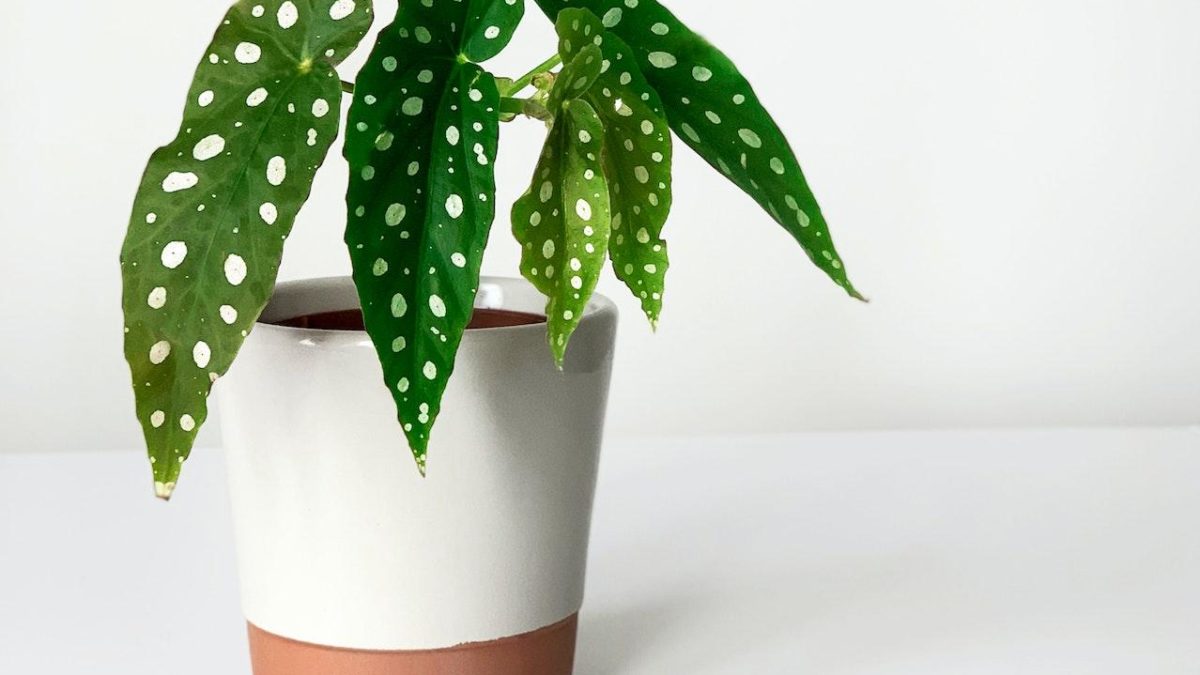Begonia houseplants are a beautiful, easy-to-care-for addition to your home or office. They come in different varieties and colors, making them a great choice for any decor. Because of their relatively low maintenance requirements,Begonias are an excellent choice for those just starting out with houseplants.
Begonias come in two main varieties: tuberous and wax. When it comes to caring for your Begonia, the most important factor is water. Light is also essential for Begonias. Most prefer bright, indirect light. Too much direct sun can scorch their leaves. Keep your Begonia in a spot where it can receive at least 4-6 hours of indirect sunlight each day.
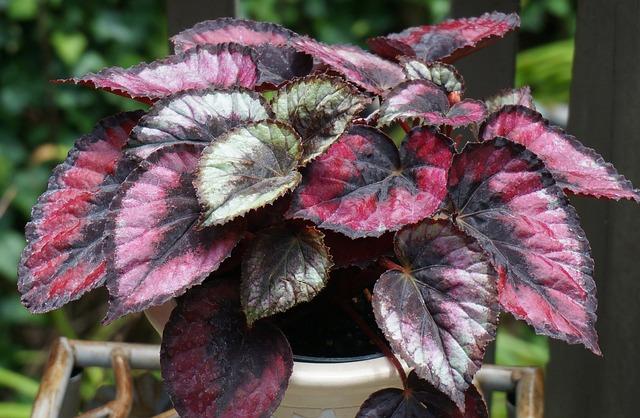
With their bright blooms and easy maintenance needs, they make a great choice for any home or office. Follow these tips and you’ll be sure to have a healthy and beautiful Begonia houseplant in no time.
Selecting The Best Begonia For Your Home
When selecting the best begonia for your home, it is important to consider the size and shape of the begonia, the light and temperature requirements of the begonia, and the type of begonia that will work best in your home.
-
Size and Shape
Begonia plants come in a variety of sizes and shapes. Some are small and compact, while others are large and bushy. You should consider the size and shape of the begonia that will best fit in your home. Begonias also come in a variety of colors, including white, pink, red, and orange.
-
Light and Temperature
Begonias require bright, indirect light to grow properly and thrive. You should also consider the temperature of your home when selecting a begonia. Begonias are best suited for temperatures ranging from 65-80°F. If your home is too hot or too cold, the begonia may not grow properly.
-
Types of Begonias
There are several types of begonias available, including wax begonias, tuberous begonias, and rex begonias. Wax begonias are great for containers and hanging baskets, while tuberous begonias are more suited for flower beds and borders. Rex begonias are best for indoor use and have stunning foliage.
-
Care and Maintenance
Begonias require regular watering and fertilizing to keep them looking their best. Begonias should be watered when the soil feels dry to the touch. Fertilize the begonias once a month with a balanced fertilizer. Prune the begonias as needed to keep them from becoming overgrown.
-
Pests and Disease
Begonias are susceptible to a variety of pests and diseases. These include aphids, mealybugs, mites, and fungal diseases. Regularly inspect your begonia for any signs of pests or disease. If you notice any, treat the begonia with an appropriate insecticide or fungicide.
-
Buying Tips
When buying a begonia, it is important to inspect the plant for any signs of pests or disease. Look for healthy, green leaves without any yellowing or brown spots. Also, make sure the begonia is well-rooted. Finally, make sure to buy a begonia that is suited for your home’s environment.
Choosing The Right Pot And Soil For Your Begonia
The right pot and soil will help your Begonia thrive and provide the best environment for its growth.
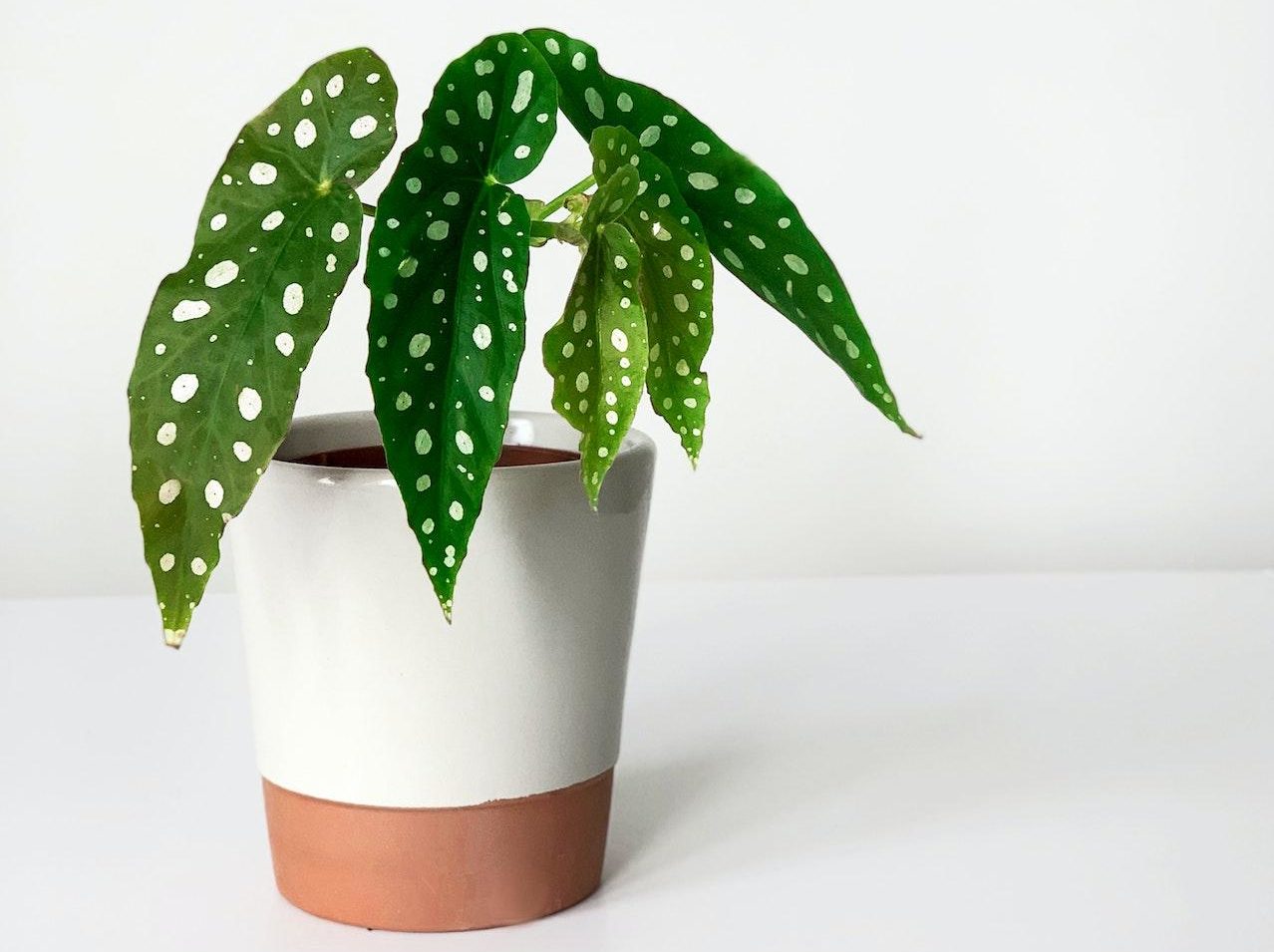
Credit: Pexels
Here are some tips on how to choose the right pot and soil for your Begonia.
-
Size
First, you’ll need to decide what size pot you’ll need for your Begonia. Begonia plants prefer to be slightly root-bound, so you should choose a pot that is slightly larger than the root ball of the Begonia. This will give the plant enough room to grow and allow for proper drainage. The pot should also have drainage holes at the bottom to ensure that excess water can drain away.
-
Soil
Next, you’ll want to choose a soil that is specifically formulated for Begonia plants. This type of soil will provide the Begonia with the necessary nutrients and minerals for optimal growth. Begonias require soil that is slightly acidic, with a pH of 5.5 to 6.5. Look for a soil mix that is designed specifically for Begonia plants, or mix your own using one part perlite, one part peat moss, and one part topsoil.
-
Material
Choose a pot that is made of a material that will allow your Begonia to breathe. Clay or ceramic pots are ideal as they allow air to pass through the walls of the pot. Avoid plastic pots as they do not allow air to move freely and can cause the soil to become soggy.
10 Tips For Growing A Healthy Begonia Houseplant.
Growing begonias at home can be an enjoyable experience and a great way to add some green to your home. But to ensure your begonias thrive and stay healthy, you need to create the optimal growing environment.
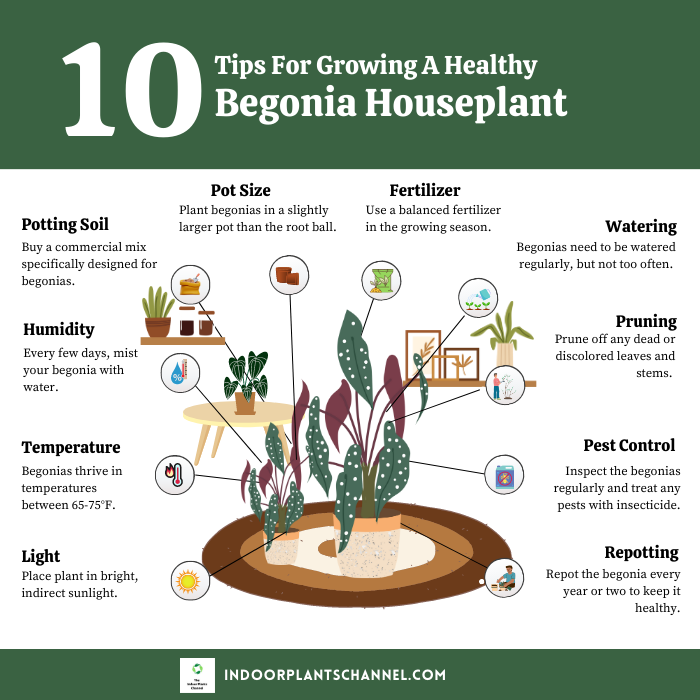
Here are some tips on how to do just that.
1. Light
Begonias are quite sensitive to light and need bright, indirect sunlight. Place your begonia in a spot where it will get plenty of indirect light, such as near a window. Make sure to keep it out of direct sunlight, as this can cause the leaves to burn.
2. Temperature
Begonias thrive in temperatures between 65-75 degrees Fahrenheit. Avoid placing your begonia in a spot that is too hot or too cold.
3. Humidity
Begonias need a humid environment to stay healthy. If your home is too dry, you can use a humidifier to help increase the humidity level in the room. You can also mist your begonia with water every few days to help keep it hydrated.
4. Potting Soil
Begonias need well-draining potting soil. You can buy a commercial mix specifically designed for begonias or make your own mix by combining equal parts of peat moss, perlite, and compost.
5. Pot Size
Begonias should be planted in a pot that is slightly larger than the root ball. This will help the begonia to spread out its roots and grow more efficiently.
6. Fertilizer
Begonias need regular fertilizing to stay healthy. Use a balanced fertilizer, like a 10-10-10 mix, every two to four weeks during the growing season.
7. Watering
Begonias need to be watered regularly, but not too often. Allow the top layer of soil to dry out before watering again. Water from the bottom up and let the water run through until it begins to drain out the bottom.
8. Pruning
Pruning can help keep your begonias healthy and looking their best. Prune off any dead or discolored leaves and stems. Prune the begonia back to a healthy stem or bud.
9. Pest Control
Begonias can be prone to pests, such as aphids and mealybugs. To prevent an infestation, inspect your begonia regularly and treat any pests you find with an appropriate insecticide.
10. Repotting
Repotting your begonia every year or two will help it stay healthy and continue to grow. When repotting, make sure to use a fresh, well-draining potting soil and a pot that is slightly larger than the root ball.
By following these steps and creating the optimal environment for your begonia, you can ensure that it will stay healthy and thriving for years to come.
Watering And Fertilizing Your Begonia
Watering and fertilizing are two of the most important aspects of growing a healthy begonia houseplant. Getting the right amount of water and nutrients is essential for keeping your begonia plant healthy and happy.
- When it comes to watering your begonia, it’s important to remember that begonias prefer moist, but not soggy, soil. If the soil around your begonia is dry, it’s time to water. Be sure to water the soil thoroughly until excess water drains out of the bottom of the pot.
- The frequency of watering your begonia will vary depending on the season and the size of the pot. During the summer months, you may need to water your begonia every 3-4 days, while in the winter months, you may only need to water it every 5-7 days.
- Fertilizing your begonia is also important for keeping it healthy. A balanced 10-10-10 fertilizer should be applied every two weeks during the spring and summer growing season. During the fall and winter, reduce fertilizer application to once a month.
- When applying fertilizer to your begonia, be sure to dilute the fertilizer to half strength. Fertilizer that is too strong can burn the begonias roots, so use a diluted solution. Also, make sure not to apply fertilizer to dry soil, as the fertilizer can stick to the dry soil and cause root burn.
Pruning And Grooming Your Begonia
Pruning and grooming your begonia is an important part of keeping your plant healthy and looking its best. Pruning helps to keep your begonia from becoming too large and overcrowded, while grooming encourages vigorous growth and flowering.
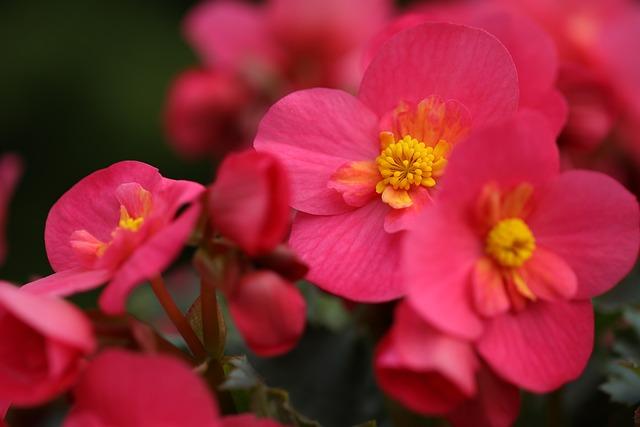
Here are some tips for pruning and grooming your begonia:
-
Prune your begonia regularly.
Pruning your begonia should be done every few months or when needed. Trim back any dead or diseased leaves and stems and remove any yellow or wilting leaves. Also, prune any stems that have become too long or are growing in an awkward direction. Pruning your begonia helps to keep it healthy and promote new growth.
-
Cut off any dead or diseased flowers.
Dead and diseased flowers can spread disease to other parts of your begonia. Cut off any dead or wilting flowers at the base of the stem.
-
Re-pot your begonia every two or three years.
Repotting your begonia helps to keep it healthy and encourages new growth. When repotting, make sure to use a pot that is slightly larger than the current one and use a potting soil that is specifically formulated for begonias.
-
Prune off any dead or diseased roots.
Prune off any dead or diseased roots at the base of the stem. This will help to keep your begonia healthy and encourage new root growth.
-
Fertilize your begonia regularly.
Fertilizing your begonia helps to promote healthy growth and flowering. Use a fertilizer specifically formulated for begonias and follow the instructions on the package.
Bonus Tips
- Place the Begonia in a well-lit area, but avoid direct sunlight.
- Make sure to water the Begonia regularly, but do not over-water.
- Prune the Begonia regularly to maintain its compact shape.
- Make sure to rotate the Begonia to ensure even growth.
- Use a humidifier in the room to increase the humidity levels for the Begonia.
- Propagate the Begonia by taking cuttings and growing new plants.
Frequently Asked Questions
-
Where is the best place to keep a Begonia houseplant?
The best place to keep a Begonia houseplant is in an area of your home that is bright but not directly in the sun. Begonias prefer indirect light and temperatures between 65-75 degrees Fahrenheit. If temperatures drop below 60 degrees, the plant may become stressed.
-
How often should I water my Begonia?
Your Begonia should be watered when the soil is dry to the touch. Avoid overwatering, as this can cause root rot. Generally, you should water your Begonia every 7-10 days.
-
How often should I fertilize my Begonia?
Fertilizing your Begonia is important to ensure that it has the nutrients it needs to grow healthy and strong. Generally, you should fertilize your Begonia every two weeks during its growing season, which is typically in the spring and summer months.
-
What type of soil should I use for my Begonia?
Begonias prefer a soil that is light and fast-draining. It should be rich in organic material such as peat moss or compost. You can also add some perlite or vermiculite to improve drainage.
-
How should I prune my Begonia?
Pruning your Begonia is important to keep it healthy and looking its best. To prune, use clean, sharp scissors to trim away any dead or damaged leaves and stems. If you want to encourage more flowering, you can also pinch off the tips of the stems.
-
What pests should I look out for on my Begonia?
Aphids, scale, mealybugs, and whiteflies are all common pests that can affect your Begonia. If you notice any of these pests on your plant, you should treat them immediately with an appropriate pesticide.
Conclusion
Growing a healthy begonia houseplant is a rewarding experience that can bring color and life to any room. With these 10 tips, you can easily learn how to care for your begonia and watch it thrive. With the right amount of light, water, and fertilizer, your begonia houseplant can be a beautiful addition to your home for years to come.
Michelle Wilde
Related posts
![]()
About Michelle Wilde
Michelle Wilde is a stay-at-home mom and avid plant lover. Armed with a post-graduate degree in Computer Science (no kidding!), she loves researching plants and landscapes. When she is not caring for her 4 kids, she spends time on her passion for plants. She blogs at www.indoorplantschannel.com, the trusted source for indoor plants.
Learn more
Subscribe
* You will receive the latest posts and updates about indoor plants!
Search
Recent Posts
Categories
- Beginner Guides (10)
- FAQ (206)
- General (2)
- How-To Guides (212)
- Indoor Plants (214)
- Pest Management (2)
- Plant Problem Solutions (4)
- Seasonal Growing (2)
- Specialized Environments (2)
- Specific Plant Care (3)
- Technical Growing (2)
